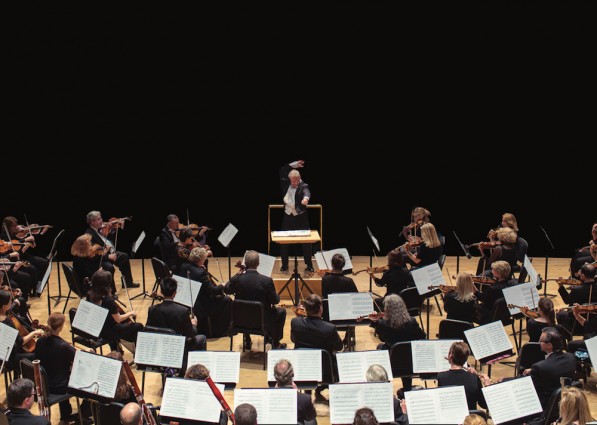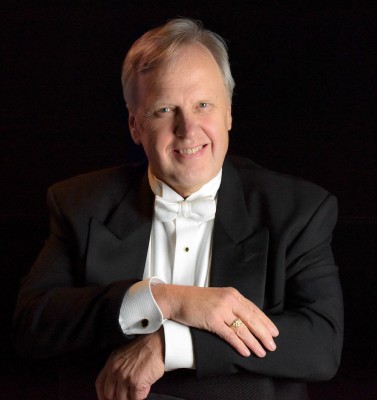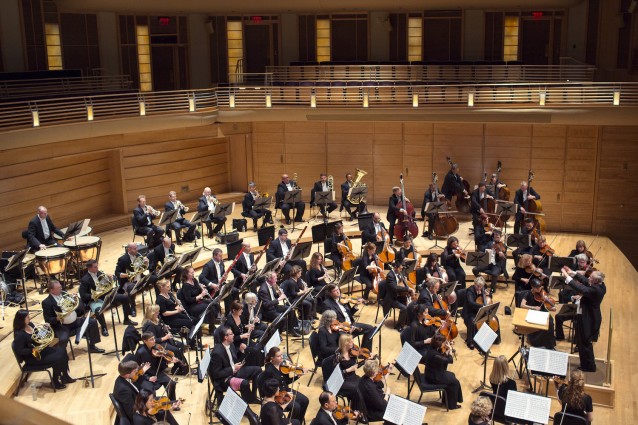Hallelujah! If your recipe for a happy holiday includes a visit to the Music Center at Strathmore to see its resident orchestra perform Handel’s “Messiah,” you are definitely not alone.
“When it comes to planning the season, that always falls into place first,” said Piotr Gajewski, founder, conductor and music director of the National Philharmonic. “There are usually some projects that are priorities, but the ‘Messiah’ goes first.”
And while it’s not a bad place to start—a genuine crowd-pleaser since its 1741 premiere with its built-in classic “Hallelujah Chorus”—Gajewski has added some strategically placed jewels to this season’s crown. He keeps his feelers out for what audiences want to hear, has even launched a new series called Musical Musings with the Maestro to discuss upcoming programs with music lovers, and is carefully coordinating heretofore un-doable programs with formerly unavailable artists, ideas that have been on the back burner for some time.

“A lot of times, people come to us with suggestions,” he said. “They brew for a couple of years, and then we suddenly find it’s possible to move forward.”
It’s that kind of forward motion that gets the season rolling. With the help of National Philharmonic Orchestra Associate Conductor Victoria Gau and National Philharmonic Chorale Artistic Director Stan Engebretson, Gajewski promises a season brimming with superb soloists, international incidents, cultural connections—and even a bit of musical mayhem for April Fool’s Day, courtesy of that merry prankster Mozart.
“We’re doing an all-Mozart program,” said Gajewski. “The young man appearing as our soloist, Mark Lu, was the winner of the International Fryderyk Chopin Competition.” Because of that prestigious win in Gajewski’s native Poland, Lu performed at the Polish Embassy—and the rest is history. “Everybody loved him,” recalled Gajewsky, “and they asked me to have him perform with us.” The maestro and the prodigy found they were connected through a mutual piano teacher, Angel Ramón Rivera—and they happily collaborated on a program that showcases Mozart’s humor as well as his genius, featuring the satirical “A Musical Joke.”
Constant conversation
Finding connections and creating clever ways into the music: Gajewski, Gau and Engebretson plan the season with an eye to what their audiences want. “For us there’s a combination of things we’re looking for,” Gau said. “We want to create a season that’s most interesting and appealing to our concert base. We’re looking for variety and we’re always planning outreach—we’re very proud of that.”

Gau, a Montgomery County resident since 1972, is particularly proud of outreach programs like the Instrument Petting Zoo and Color the Music, two ways the National Philharmonic supplements its All Kids, All Free, All the Time policy through which the Philharmonic encourages young people, ages 7 to 17, to attend performances and nurture their love of music. “The hope is we’ll have kids really engaging with the music before they even come to the performance,” she said.
And that’s particularly important for the National Philharmonic, a nonprofit governed by a board of directors that has to balance its art and the needs of its audience. “We’re moving into an era where there’s a constant conversation,” Gau noted. “‘How are we best serving our audience?’ ‘How are we best serving our mission?’ and ‘How are we making a difference in Montgomery County as a resident orchestra?’
“In the arts, we don’t live in a vacuum,” she added. “If we allow ourselves to do that, we become less and less relevant.”
Recipe for success
Which is why getting the season right is critical.

“Every time we sit down to work with a new season, it’s like an empty drafting board,” said Stan Engebretson, artistic director of the National Philharmonic Chorale. “We have traditions—Handel’s ‘Messiah,’ obviously—and maybe a new soloist, a new instrumentalist; everybody brings new elements. It’s like going back to your favorite recipe, but making it a little different every time.”
This season, the Chorale will be cooking with gas, with standout programs including the D.C. area premiere of Baltimore native Jonathan Leshnoff’s oratorio “Zohar,” “Music from the English Cathedral,” featuring the world premiere of “Radiance and Light,” a commissioned work by the young Maryland composer Alistair Coleman, and the versatile crowd-pleaser Carmina Burana.
For Engebretson, finding a dynamic new composer or performer is an integral part of the job. “Our ears are always open,” he said. “We’re looking to broaden our reach in the community.”

For Gajewski, that means holding on to all the favorites—pianist Brian Ganz kicking off the season with an evening of Beethoven; Vivaldi’s and Astor Piazzolla’s “The Four Seasons,” courtesy of violinist Chee-Yun, plenty of Chopin and Rachmaninoff. But it also involves reaching out in new ways.
“We’re looking to do something every season that has a connection to Jewish culture,” he remarked. “This year we have two…and for the 2018-2019 season we’ll be celebrating the 100th anniversary of Leonard Bernstein, arguably the most important composer born on the North American continent.”
For Gajewski, every season, no matter how diverse, has a one important thing in common: the proximity of the National Philharmonic to the people it is committed to serve.
“By being based here in Montgomery County and being the only local resident musical community at Strathmore, we develop our own ideas—right here,” he insisted. “We are really responsive to the local community.”
And it shows.